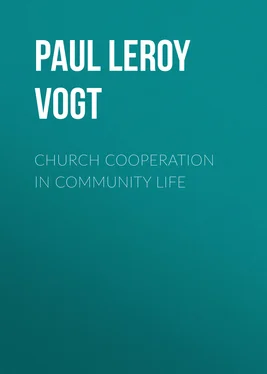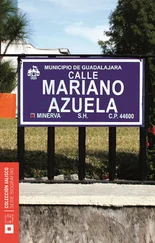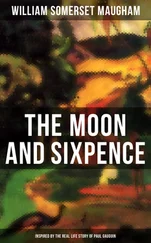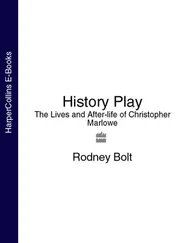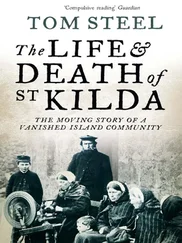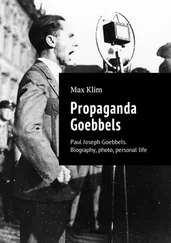Paul Vogt - Church Cooperation in Community Life
Здесь есть возможность читать онлайн «Paul Vogt - Church Cooperation in Community Life» — ознакомительный отрывок электронной книги совершенно бесплатно, а после прочтения отрывка купить полную версию. В некоторых случаях можно слушать аудио, скачать через торрент в формате fb2 и присутствует краткое содержание. Жанр: foreign_prose, foreign_religion, foreign_antique, на английском языке. Описание произведения, (предисловие) а так же отзывы посетителей доступны на портале библиотеки ЛибКат.
- Название:Church Cooperation in Community Life
- Автор:
- Жанр:
- Год:неизвестен
- ISBN:нет данных
- Рейтинг книги:4 / 5. Голосов: 1
-
Избранное:Добавить в избранное
- Отзывы:
-
Ваша оценка:
- 80
- 1
- 2
- 3
- 4
- 5
Church Cooperation in Community Life: краткое содержание, описание и аннотация
Предлагаем к чтению аннотацию, описание, краткое содержание или предисловие (зависит от того, что написал сам автор книги «Church Cooperation in Community Life»). Если вы не нашли необходимую информацию о книге — напишите в комментариях, мы постараемся отыскать её.
Church Cooperation in Community Life — читать онлайн ознакомительный отрывок
Ниже представлен текст книги, разбитый по страницам. Система сохранения места последней прочитанной страницы, позволяет с удобством читать онлайн бесплатно книгу «Church Cooperation in Community Life», без необходимости каждый раз заново искать на чём Вы остановились. Поставьте закладку, и сможете в любой момент перейти на страницу, на которой закончили чтение.
Интервал:
Закладка:
The term "rural" likewise conveys a different thought to different people. Indeed, so likely has the term been to mislead that in a recent national survey of religious conditions, the term was abandoned and "town and country" substituted. The simpler plan is to arrive at a definition of the word "rural" which will include what the latter term connotes. To confuse "rural" with "agricultural" is to ignore both the past and the present in movements of population and in organization of interests. To an increasing degree the interests of the open country are centering in the village, or even larger centers. So that in discussing the problems of the agricultural population it is often necessary to make the center of discussion the organization of the village with an agricultural environment. The better plan is to definitely discuss the problems of the open country under the term "agricultural" and retain the other term for all interests of groups of population in smaller communities, whether in the open country or in the villages. In general, the division of the United States Census will be observed and the term "rural" regularly applied to all groups of under two thousand five hundred population.
At a recent meeting of country ministers an attempt was made to define what is the problem of the rural church. The definition as framed is herewith presented: "The rural task of the church is the nurture and development of all phases of human welfare in those communities where the general life and thinking of the people are related to matters which pertain to material natural resources."
This definition is inadequate from the administrative point of view in that it would exclude the small manufacturing community, the educational center, the summer and winter resort communities, and similar specialized groups where population is small. The problems of these small communities not directly related to material natural resources have many characteristics in common with those included in the above definition. Size of community has much to do with the type of problem presented; and the one who understands the problems of the agricultural village is probably better able to deal with the problems of the villages of the type mentioned than is the one trained for service in a metropolitan center.
The term "church" is here used in the sense of including all religious forces in rural life. The Sunday School Association, the Christian Associations, Church Federations, and other groups allied to the church are included in the general term.
The church is the only agency in existence that is concerned with man in all his relationships. It is concerned with keeping alive in human consciousness the existence of a Divine Being and of man's relationship to that Being. It is the only agency that proceeds on the theory of the immortality of the human soul and that has a program of preparing the soul for a life after death. In common with other agencies the church is concerned with the individual life of man on this earth and endeavors to lead human beings to that course of life which will result in the maximum of personal spiritual welfare. And in common with other agencies it is concerned with man in his relations to others and to his material environment because these relationships have a vital effect on his spiritual life.
A full analysis of the functions of the church would include a discussion of those features of church work which have to do with man's relation to God and to an immortal existence. But in a discussion of the church in relation to the community it is not necessary to consider man's relation to God nor to a future life except in so far as beliefs in such relationships influence his personal welfare on this earth or his relationships to his fellow man. Thus this discussion falls in the field of sociology rather than in the field of theology or psychology. A casual observation of the forces at work in human relationships, especially in the smaller communities, leads quickly to the conclusion that beliefs both with reference to God and to a future life have a vital effect on social conduct. But it is the effect instead of the truth of beliefs that is the subject matter to be considered.
Having thus defined the field of our discussion both as to subject matter and as to the phase of the interests of the church to be considered, it is next in order to note the size of the task.
According to the census of 1920, 50,866,899 people in the United States lived in rural territory, that is, in communities of less than 2,500 population. This was 48.1 per cent of the total. For the first time in the history of the country the records showed a larger proportion of the total population living in urban centers than in villages or in the open country. The population in incorporated villages of less than 2,500 population was 9,864,196, or 9.3 per cent of the total, while that in unincorporated or open country communities was 41,002,703 or 38.8 per cent, as compared with 8.8 per cent and 44.8 per cent respectively in 1910.
The total rural population increase was but 1,518,986, or 3.1 per cent. Incorporated village increase was 1,745,371, or 21.5 per cent, while the unincorporated community population actually decreased 227,355, or .6 per cent.
These figures indicate two conclusions of importance to our discussion. The first is that the villages of less than 2,500 inhabitants are sharing with the large centers in the general increase in population. Their increase proportionately is not so marked as is that of the extremely large centers, but it is sufficiently marked to indicate that they offer opportunities that attract more than does the open country. This village growth must be reckoned with in determining policies of location of church buildings and the type of local church program for community service.
The second conclusion is that the open country is still at a disadvantage so far as its possibilities of supporting a large population are concerned. Actual depopulation of the open country, the enlargement of the size of farms, the abandonment of acreage once under cultivation, which preliminary figures issued by the Census Bureau indicate, show that not yet is the demand for agricultural products such as to make a much larger open country population possible. This fact also points the direction for readjustment of rural community life.
The data from the religious census of the United States, taken in 1916, while not classified as rural and urban, give hopeful figures as to the progress of religious institutions in this country. While the total population of the United States increased during the decade 1910-20, 14.9 per cent, the church membership from 1906-1916 increased 19.6 per cent. The total church membership increase, 6,858,796, was 50.2 per cent of 13,710,842, the increase in total population. These figures of church membership increase, covering a period before the European war began to affect this country seriously, indicate that the general rising ethical standards of American life have had their reflection in the larger personal as well as financial support of the religious forces.
While data are not available as to the proportion of rural and urban population belonging to church, the census gives figures as to the church membership in communities of over 25,000 population. According to census estimates, 32.7 per cent of the population lived in cities of over that population in 1916. The religious census shows that 36.5 per cent of the church membership lived in communities of that size. Contrary to popular impression, the larger centers actually have a larger proportionate church membership than do the smaller communities. The facts show that the problem of advance of the Christian Church is more of a small-community problem than it is of the larger centers.
Читать дальшеИнтервал:
Закладка:
Похожие книги на «Church Cooperation in Community Life»
Представляем Вашему вниманию похожие книги на «Church Cooperation in Community Life» списком для выбора. Мы отобрали схожую по названию и смыслу литературу в надежде предоставить читателям больше вариантов отыскать новые, интересные, ещё непрочитанные произведения.
Обсуждение, отзывы о книге «Church Cooperation in Community Life» и просто собственные мнения читателей. Оставьте ваши комментарии, напишите, что Вы думаете о произведении, его смысле или главных героях. Укажите что конкретно понравилось, а что нет, и почему Вы так считаете.
